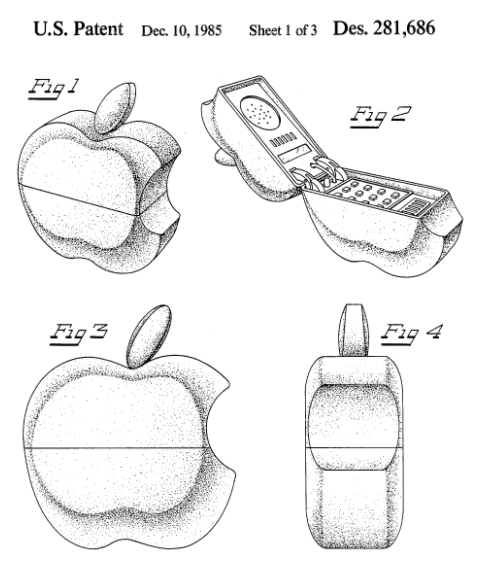Often trademark lawyers, us included, say that registering a word mark (i.e. the name of your product or service) gives you the strongest rights to it and should take priority over registering logos and other figurative trademarks. This is true in the sense that a word mark gives you exclusive rights to the name regardless of how it is written. The object of protection is the word itself so registering a word trademark gives maximum protection for your brand name. To reflect this, word trademarks cover more than 57% of all EU trademarks, much more than any other trademark types.
Figurative trademarks protect the particular visual embodiment of the mark. In most cases figurative trademarks are logos. Sometimes they contain words, sometimes only a figurative element without any words. Figurative trademarks comprise approximately 42% of all EU trademarks.
Although in most cases companies should first protect the name of the product or service as a word trademark, having a unique and distinctive logo is often in practice the best and most effective way of distinguishing one’s product or service from others.
Why logos are important for every business?
Logos are essentially symbols. Humans have used symbols for more than 100,000 years, much longer than writing has been around. Symbols have historically been used to convey information, originally before writing was invented, but importantly also after that.
Logos are attention grabbers. Consumers are bombarded with hundreds of brands daily. A good logo will help you get your customer’s attention. Very often a logo is the first thing your customer sees. This applies to brick-and-mortar stores just like websites. In retail setting a strong logo is particularly important, because your product might be next to 10 other competing products. The same applies to online stores where similar products from various producers are on offer. A logo is often a very strong distinguishing factor.
You can put your logo everywhere. Imagine advertising or having merchandise if you didn’t have a logo. How boring would a startup hoodie or a poster be if it only had the name of your product or service in a standard Arial or Times New Roman font? If you make physical products, imagine putting your brand name on the product or its packaging with standard text. It doesn’t make your product seem very interesting. It just doesn’t stand out. It doesn’t even make any sense.
Logos can contain a lot of information. For example, everybody recognises the red cross symbol of hospitals and medical services, the international recycling symbol with three twisted green arrows, or that the white flag represents surrender or willingness to negotiate. Using the white flag has a lot of meaning and triggers certain legal protections. The person comes unarmed and is willing to surrender or negotiate. The other party must respect the white flag and not attack the person using it. It is often possible to convey a lot of information with a simple symbol.
Logos can evoke a lot of emotions. In addition to just neutrally conveying information (for example showing the location of a hospital), logos can often be much more powerful than that. For example, displaying a swastika sign has been made criminal in many countries because it is so offensive. Similarly, or rather conversely, Apple’s logo evokes very positive emotions and sense of brand loyalty in the minds of Apple users. For Nike’s customers, the swoosh represents innovation and inspiration. For many hungry travellers in an unknown place, the sight of golden arches represents a relief and a familiar eating place where you know what you are going to get, how you are expected to behave, what it will likely cost, etc.
Logos can be very memorable. McDonald’s and other big companies have spent a lot of money in promoting their brand. Everybody recognises the golden arches of McDonald’s. While it is difficult to get brand recognition of the same level as McDonald’s, logos play an important role in the branding of startups and SMEs. Often customers remember a striking logo much better than the word it contained. This might be the most important reason for having a logo. It is often easier to remember than your product name. For startups that do not have marketing divisions with large budgets, this is essential. If you get your brand noticed, it is vital that the memory sticks.
Logos are adjustable. It is very common that over time, logos evolve with the rest of the world. It is possible to make subtle changes to a logo without losing the original idea behind a logo or the recognition and brand equity the old logo had. For example, both Apple’s and Google’s logos have been refreshed in the last twenty years. The current versions are still very similar to the old versions, but at the same time they seem relevant and up to date.
To illustrate the power of logos, consider the below examples. They show that even if you completely change the brand name in the logo, the modified logo still reminds you of the original brand. The visual elements are so powerful and memorable that changing the word element does not break the link to the original brand.
Source: https://www.behance.net/gallery/131089501/logos-twisted (courtesy of Mostafa Azzam)
Logos are particularly useful in situations where the name of the product is descriptive or difficult to remember. If the name of the product is descriptive, it may not even qualify for legal protection at all. In that case the best alternative is to have a memorable logo that can be protected.
Conclusion
Logos are very important brand assets for startups and SMEs. In crowded spaces they are often the best way of distinguishing your product or service from others, and they are often easier to remember than word trademarks. In short, having a great logo makes marketing and selling your product or service a lot easier.




